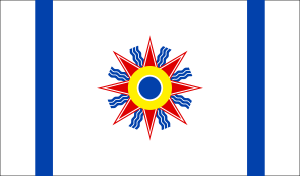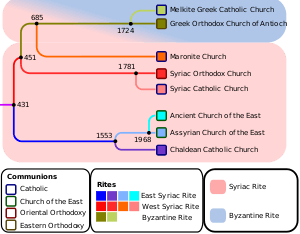Senaya language
The Senaya language is a modern Eastern Syriac-Aramaic language. It is the language of Assyrians originally from Sanandaj in Iranian Kurdistan. Most Senaya speakers now live in California, United States and few families still live in Tehran, Iran. They are mostly members of the Chaldean Catholic Church. Since the speakers are ethnically Assyrian, the language would be, at times, considered a dialect of Assyrian Neo-Aramaic.
| Senaya | |
|---|---|
| ܣܢܝܐ Senāya, ܣܘܪܝ Soray | |
| Pronunciation | [sɛnɑjɑ], [soraj] |
| Native to | Iran |
| Region | Tehran and Qazvin |
Native speakers | 60 in Iran (1997)[1] 200 in California (1994)[2] |
Afro-Asiatic
| |
| Syriac (Māḏnhāyā alphabet) | |
| Language codes | |
| ISO 639-3 | syn |
| Glottolog | sena1268[3] |
Origin, history and use today
The city of Sanandaj is at the southeastern periphery of the area of spoken modern Aramaic languages. Its geography makes the Neo-Aramaic of Sanandaj quite distinct from other dialects. Two different colloquial Aramaic dialects developed in Sanandaj: Jewish Hulaula and Christian Senaya. The two languages developed along different lines, so that the two are not mutually comprehensible. One distinctive difference between the two is the sound change associated with the Middle Aramaic fricative θ (th), often rendered as l in Hulaula, and s in Senaya. For example, mîθa, 'dead', is mîsa in Senaya, and mîla in Hulaula.
Most Senaya speakers are members of the Chaldean Catholic Church, which broke away from the Church of the East in the 16th century and entered into communion with the Roman Catholic Church. However, Senaya is to a small degree incomprehensible to speakers of Chaldean Neo-Aramaic, also Chaldean Catholics, originally from Iraq because of the heavy Kurdish influences on the language. In the middle of the 20th century, the Chaldean Bishop of Senna (as Sanandaj is called in Senaya) was moved to Tehran. The Christian community soon followed, so that there are no native speakers of Senaya left in Sanandaj. In Tehran, Senaya has been heavily influenced by the Urmežnāya dialect of Assyrian Neo-Aramaic spoken by the larger Church of the East community there. Both church communities use classical Syriac in worship. Senaya is written in the Madnhāyâ version of the Syriac alphabet, which is also used for classical Syriac.
Research
1995 a research project under the leadership of Estiphan Panoussi in cooperation with Wolfhart Heinrichs granted by the Swedish Council for Research in the Humanities and Social Sciences analyzed the Senaya Dialect (Titel: The Christian Senaya Dialect on Neo-Aramaic Texts, Grammar and Dictionary). The project produced three volumes: Senaya, A Christian Neo-Aramaic Dialect (Originally in Persian Kurdistan)(400 pages). Senaya Grammar (300 pages). A Dictionary of the Neo-Aramaic Senaya Dialect (800 pages).
Senaya culture
The first recorded music with Senaya lyrics was released by Paul Caldani in 2002, titled Melodies of a Distant Land.
See also
References
- Senaya at Ethnologue (15th ed., 2005)
- Senaya at Ethnologue (13th ed., 1996).
- Hammarström, Harald; Forkel, Robert; Haspelmath, Martin, eds. (2017). "Senaya". Glottolog 3.0. Jena, Germany: Max Planck Institute for the Science of Human History.
Publications
- Estiphan Panoussi : On the Senaya Dialect, in Wolfhart Heinrichs (ed) Studies in Neo-Aramaic (Harvard Semitic Studies) 1990, pp. 107-129,ISBN 9789004369535.
- E. Panoussi: „Ein vorläufiges Vergglossar zum aussterbenden neuaramäischen Senaya-Dialekt“, Rivista Degli Studi Orientali, vol. LXV,(1991) fasc. 3-4:165-183.
- Heinrichs, Wolfhart (ed.) (1990). Studies in Neo-Aramaic. Scholars Press: Atlanta, Georgia. ISBN 1-55540-430-8.




